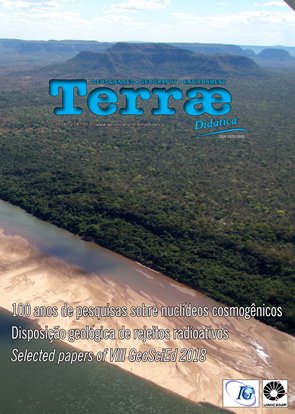Resumo
The explosion and dissemination of knowledge and technologies is one of the characteristics of the current time. The teacher is no longer the reference of knowledge or competence. The expansion and deepening of concepts and methods grow exponentially. Knowledge does not provide a clear path to future life success. Earth-related issues are global sustainability concerns. Now, the claim is to pick up and deal with the information to solve specific problems. The expert apps have become powerful tools for learning and professional operations. There is a new student with different problems, social environment and motivations, especially his appreciation for autonomy, in an immense diversity of offers and demands. And there is new ways to learn, more friendly but more away from the real world. What does this change in the curricula and for the teacher and student in the classroom? Two opposite answers are the common behavior: focus on teaching or focus on learning. In the first, good teachers will look for the best subjects, based on gaps and remarkable discoveries and good examples in the body of scientific knowledge and attractive ways of presenting them to students. In the second, good teachers will help and guide students to organize and work to find the most appropriate and motivating issues and ways to deal with them to be useful in their lives. Earth sciences have many problems, solutions and challenges, daily in the news and in the surroundings of place and student life. Students become proud to be active in the group, in his real world, according to his needs, his challenges; and they need help and guidance in this process. Teachers will focus on the motivations of these students to build their knowledge, their being, their skills, their professional abilities, their commitments as citizens and the reasons to lifelong learning.Referências
Chaves A.A. org. 2017. A Neurobiologia do Aprendizado na Prática. Ed. Alumnus. Digital version. https:// books.google.com.br/books.
Chisholm L., Fennes H., Karsten A., Reich K. 2010. Learning to learn: a method in action. Synthesis Report. European Commission. 38p. URL: https://www.uibk.ac.at/bgl/projects_networks/ l2l/1l2l-literature-review-synthesis-report.pdf. (ac. Dez/2016).
Druker P.F. 2002. Managing in the Next Society. Butterworth-Heinemann. 321p. (Business & Economics).
Freire P. 1996. Pedagogia da autonomia: saberes necessários à prática educativa. São Paulo: Ed. Paz e Terra.
Gardner H. 1983. Frames of mind: the theory of multiple intelligence. New York, Basic Books.
Houde J. 2006. Andragogy and Motivation: An Examination of the Principles of Andragogy through Two Motivation Theories. Online Submission, Paper presented at the Academy of Human Resource Development International Conference (AHRD) (Columbus). p. 90-97 (Symp. 4-3). URL: http://www.eric.ed.gov/contentdelivery/servlet/ ERICServlet?accno=ED492652.
Hugget R. 1985. Earth Surface Systems. Springer-Verlag. 270p.
Huggett R.J. 1995. Geoecology. Environmental Change: the evolving ecosphere. London, Routledge. 404p.
Gardner H. 2011. The Theory of Multiple Intelligences: as Psychology, as Education, as Social Science. Univ. Madrid. URL: https://howardgardner01.files. wordpress.com/2012/06/473-madrid-oct-22-2011. pdf.
Knowles M.S., Holton E.F., Swanson R.A. 1998.The adult learner: The definitive classic in adult education and human resources development. 5 ed. Houston, Gulf.
Maslow A.H. 1943. Theory of Human Motivation. Psychological Review, 50:370-396.
Savin-Baden M. 2004. Understanding the impact of assessment on students in Problem-Based Learning. Innovations in Education and Teaching International, 41(2):221-233.
STEM 2013. Federal Science, Technology, Engineering, and Mathematics (STEM) Education 5-Year Strategic Plan. A Report from the Committee on STEM Education National Science and Technology Council. URL: http://www.whitehouse.gov/sites/default/files/microsites/ostp/pcast-stemedreport.pdf.
Tofler A. 1980. A Terceira Onda. Trad. J. Távora, 1982. Ed. Record. 491p.
Trefil J.S., Hazen R.M. 1995. The Sciences: An Integrated Approach. 1st vol. The Sciences, an integrated approach. John Willey & Sons. 343p.
Usher R. 2013. Experiência, pedagogia e práticas sociais. In: Illers K. org. 2013. Teorias contemporâneas da aprendizagem. Porto Alegre: Penso.
Vasconcelos C., Almeida A. 2012. Aprendizagem baseada na resolução de problemas no ensino das ciências: Propostas de trabalho para Ciências Naturais, Biologia e Geologia. Coleção Panorama. Porto: Porto Ed. 127p.
A Terrae Didatica utiliza a licença do Creative Commons (CC), preservando assim, a integridade dos artigos em ambiente de acesso aberto, em que:
- A publicação se reserva o direito de efetuar, nos originais, alterações de ordem normativa, ortográfica e gramatical, com vistas a manter o padrão culto da língua, respeitando, porém, o estilo dos autores;
- Os originais não serão devolvidos aos autores;
- Os autores mantêm os direitos totais sobre seus trabalhos publicados na Terrae Didatica, ficando sua reimpressão total ou parcial, depósito ou republicação sujeita à indicação de primeira publicação na revista, por meio da licença CC-BY;
- Deve ser consignada a fonte de publicação original;
- As opiniões emitidas pelos autores dos artigos são de sua exclusiva responsabilidade.

